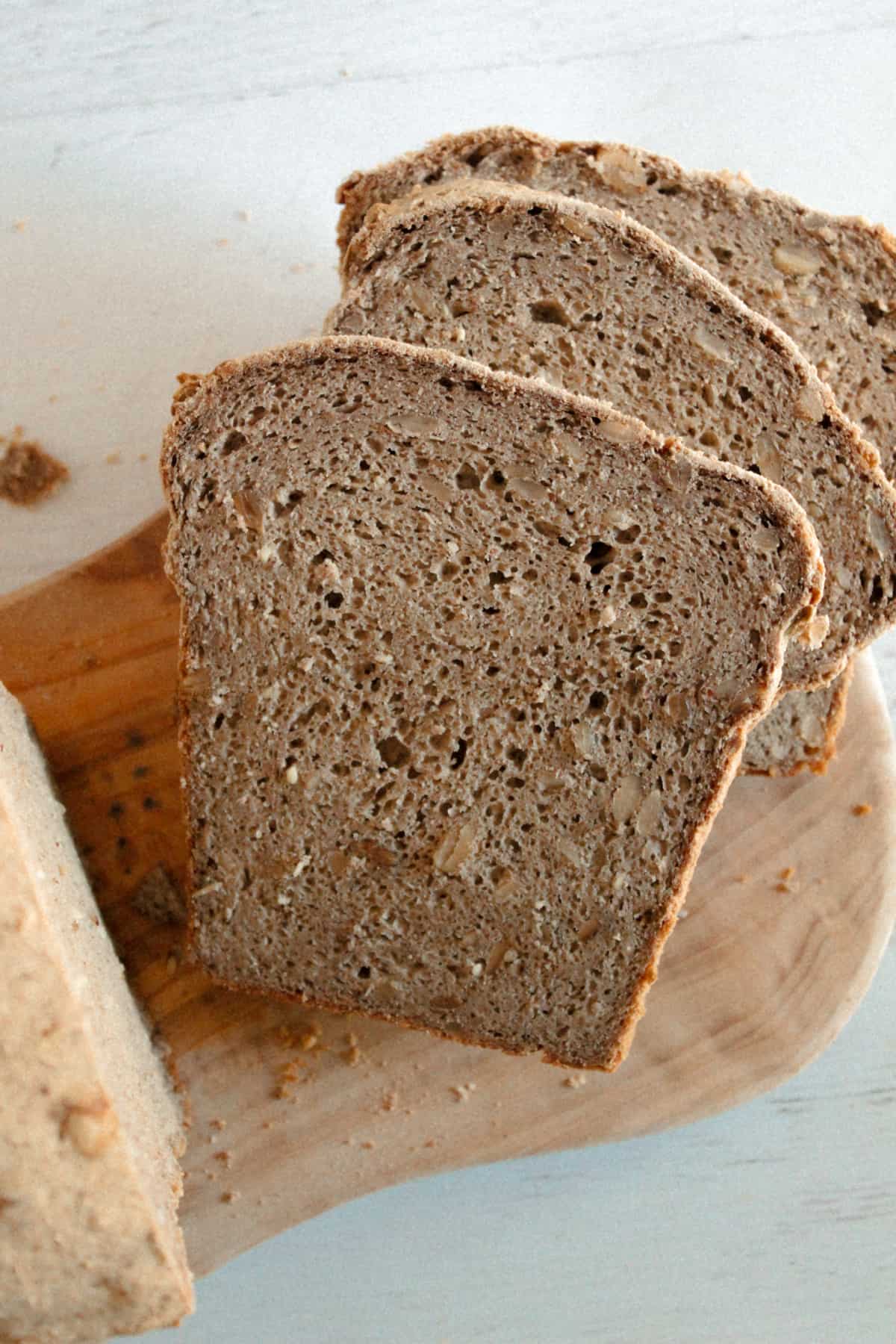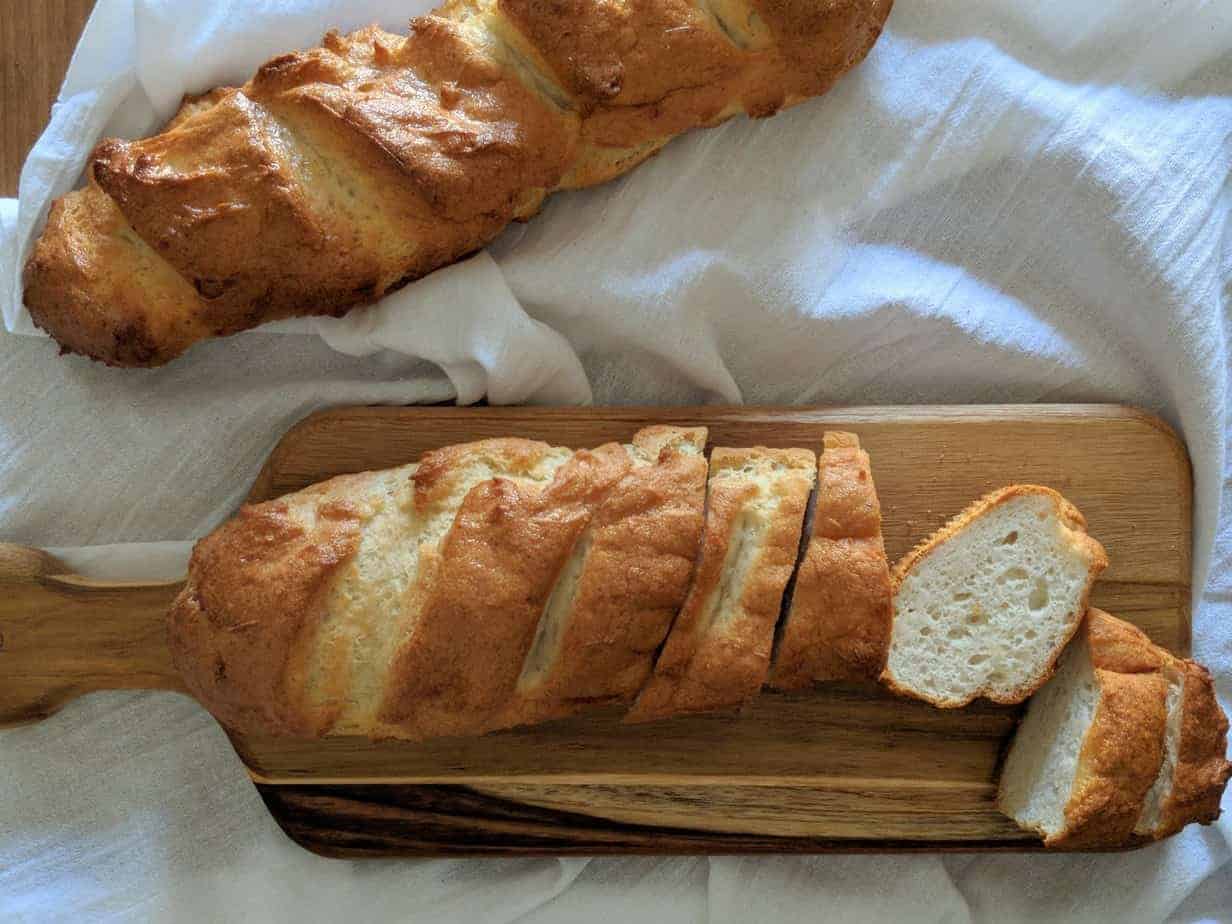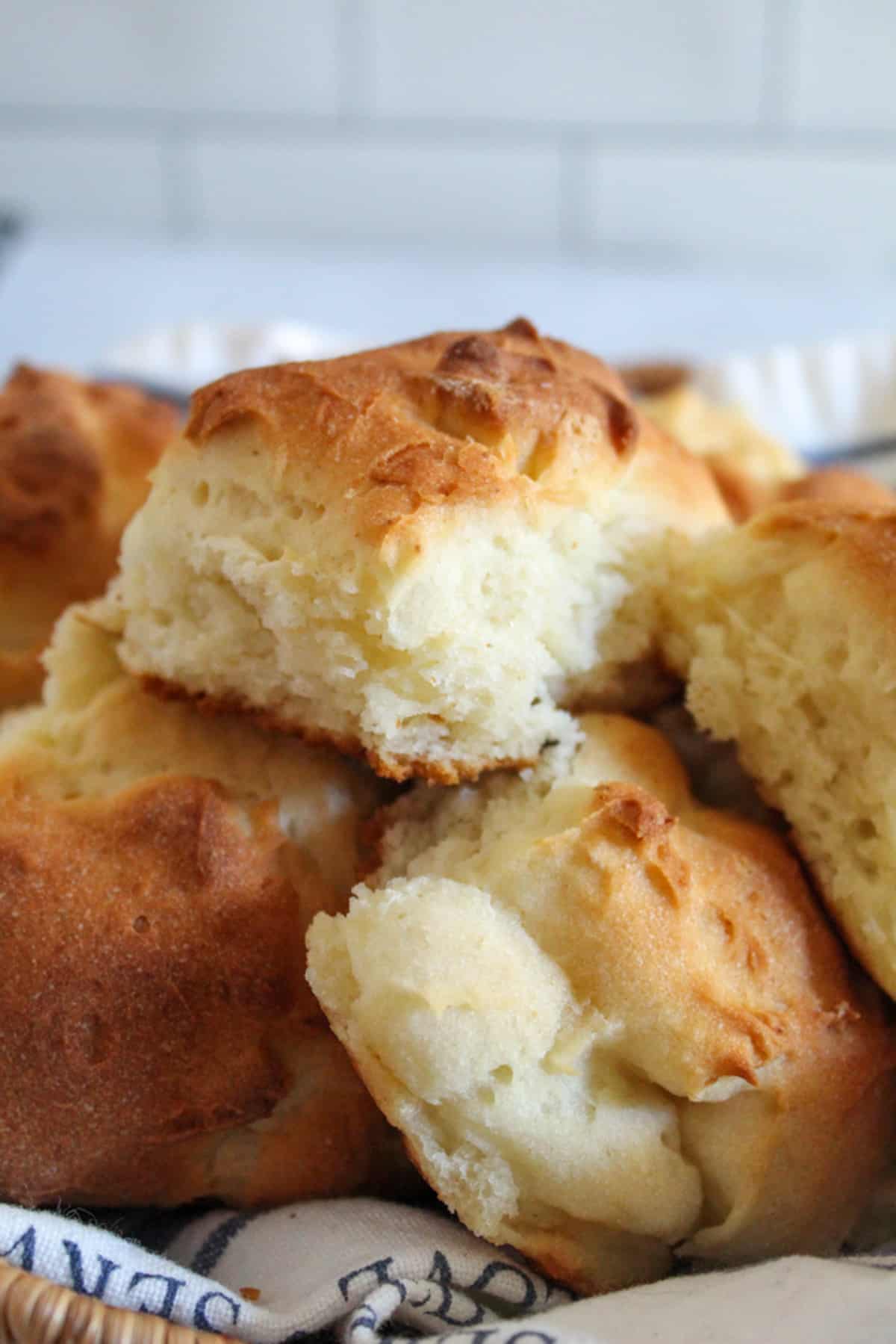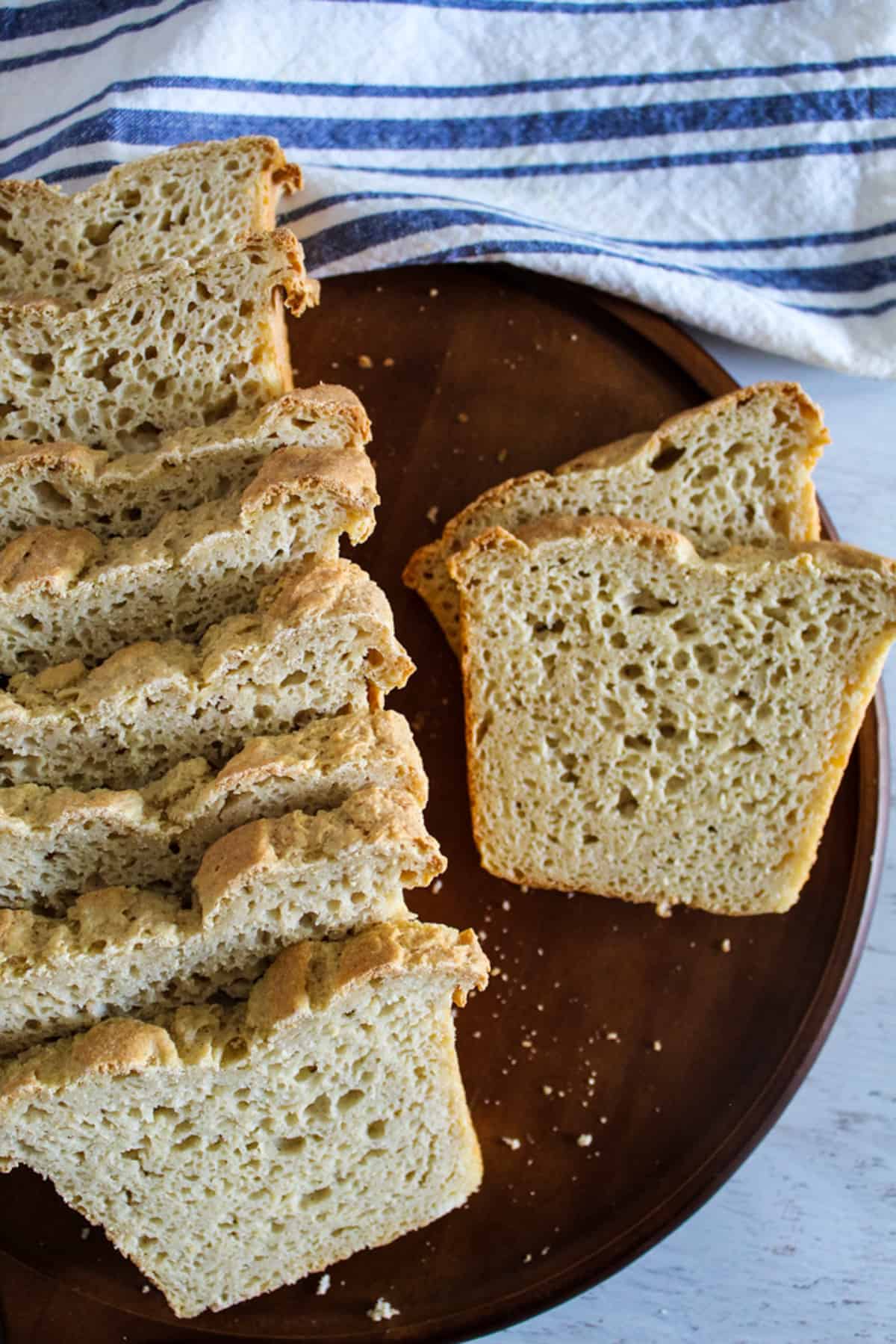Best Millet Bread Recipe: Gluten Free, Dairy Free
From sandwiches to French toast, this soft and fluffy millet bread is the perfect gluten and dairy free loaf for just about any dish. With a light, tender center and golden brown crust, this homemade bread is just as delicious the next day as it is fresh from the oven. And if you’re curious about millet flour, check out this post with more information about this fascinating grain.

Millet Bread Taste & Texture
This is one of my favorite gluten-free breads to make because the taste of this millet bread is very, very mild – very close to a storebought bread. Aside from being naturally gluten free, the millet flour in this recipe contributes a mildly sweet flavor and a delicate, yet firm crumb.
Table of Contents
This is not a “100% millet flour bread” although millet flour is the main flour in this recipe, it also contains a blend of flours and starches that contribute to the irresistibly soft and chewy texture. Plus the starch keeps the bread soft so it doesn’t dry out so quickly.
Looking for more gluten-free bread recipes? Check out this sorghum flour gluten-free bread recipe and this delicious gluten-free sandwich bread.
Gluten-Free Millet Bread at a Glance
If you’ve ever made yeast bread from scratch before, you know it can be a lengthy process. The best thing about this millet bread recipe is how quickly it can be mixed together. Like these yeast rolls in under an hour or these breadsticks, you can easily make this recipe from start to finish in just an hour and a half. Here are a few more reasons why this is sure to be your new go-to bread recipe:
- It is both gluten and dairy free
- You can easily make your own millet flour at home using a high-speed blender if desired (directions are in the section below)
- It makes the perfect chewy, all-purpose bread with a mild flavor
- It stays fresh for up to 2 days in a well sealed bag on the counter!

Ingredients & Substitutions
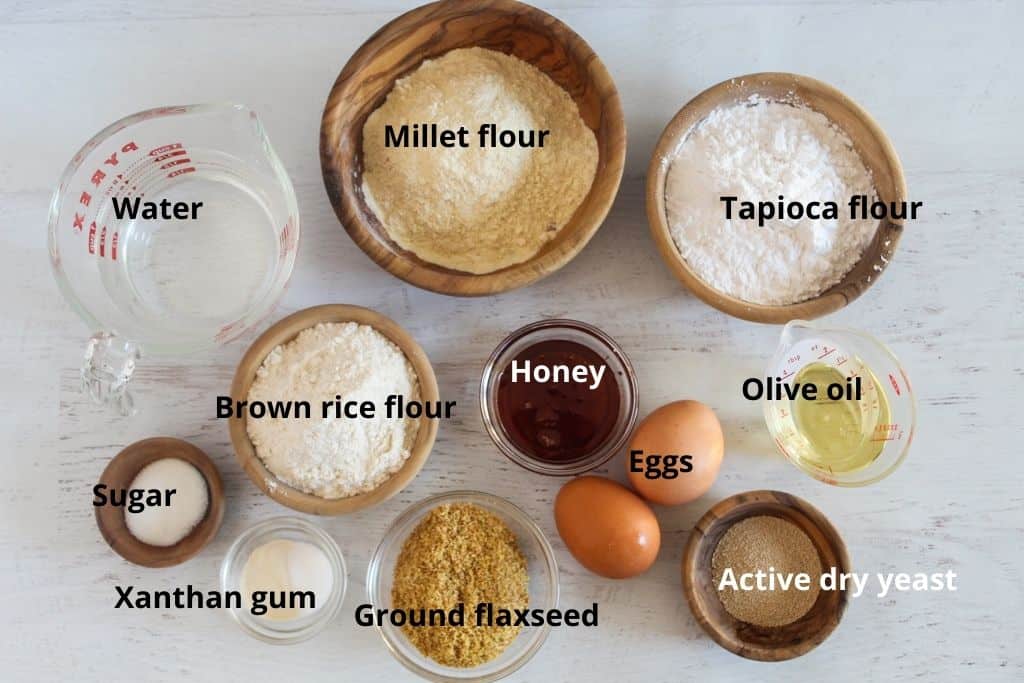
- Active Dry Yeast – The yeast is essential in this recipe because it causes the bread to rise. Instead of active dry yeast, you may use instant yeast. Instant yeast does not need to be proofed and can be added directly to the dry ingredients.
- Granulated Sugar – Because sugar is needed in this recipe for the yeast to work properly. I would not recommend substituting with a liquid sweetener like honey or maple syrup as it changes the balance of wet to dry ingredients.
- Water – There is no alternative for the water in this recipe.
- Millet Flour – This recipe was tested using the Nuts.com brand of millet flour. Nuts.com is budget friendly and a great quality product. Other brands may work here but I haven’t tested any in this bread. Keep in mind that results may vary with different flour brands. Half of the millet flour can be substituted with teff flour if desired – the total weight between both flours should equal 120 grams. Find out more about substituting gluten free flours here.
- Tapioca Flour – This recipe was tested with the tapioca flour from Nuts.com. Tapioca flour and tapioca starch are the same thing so they can be used interchangeably. Corn starch or potato starch may be substituted for the tapioca starch.
- Brown Rice Flour – The recipe has not been tested with anything other than brown rice flour, but here if you want to try something else, here are some alternatives to try. The Nuts.com brand of brown rice flour was used and it works very well here.
- Ground Flaxseed – This recipe was tested using Bob’s Red Mill brand of golden flaxseed meal. Ground chia seeds could also be used in place of the flaxseed.
- Xanthan Gum – Xanthan gum functions as a binder. Psyllium husk powder could be used in place of the xanthan gum.
- Salt – There is no substitute for salt in this recipe. Although, if you are following a low salt diet, it can be omitted.
- Eggs – Regular eggs work best in this bread recipe. I would not recommend using an egg alternative here.
- Olive Oil – Olive oil can be substituted with vegetable oil.
- Honey – Maple syrup can be used as a substitute for the honey.
Exact measurements and directions for making this millet sandwich bread are in the recipe card below.
How to Grind Millet Flour
Making your own millet flour at home just requires the right tools and some patience. I recommend grounding only the amount that you will use immediately as freshly ground millet flour can spoil quickly.
- Start with hulled millet – rinse it in a colander and spread it out on a lint-free towel to dry completely.
- Use a high-speed grinder like this one, and grind the millet grains, a little at a time, until it resembles flour.
- Use a fine mesh strainer to sift any large pieces from the flour.
- Grind again if needed.
This freshly ground flour is best used immediately. Store any remaining flour in an airtight container in the refrigerator to use within 1 week or freeze it for longer storage. Follow this flour storage guide for more information.
How to Make Millet Bread

Step One: Add the warm water to a liquid measuring cup. Then, add the active dry yeast to the warm water and stir to combine. Set aside to proof for 5 minutes.

Step Two: In a medium bowl, combine the gluten-free flours, ground flax seed, and xanthan gum until combined.

Step Three: In a large mixing bowl of a stand mixer, add the eggs, olive oil, honey, sugar, and yeast mixture. Mix for 30 seconds on low speed.

Step Four: Add the dry ingredients to the stand mixer bowl and mix on low speed for another 30 seconds.

Step Five: Stop the mixer and scrape down the batter from the sides of the bowl using a rubber spatula and then mix again on medium speed for 3 minutes.

Step Six: Prepare an 8″x4.5″ baking pan by spraying it with non-stick cooking spray. Scrape the bread dough into the pan.

Step Seven: Let the batter rise in the pan for 35 minutes or until the top of the dough barely crests over the top of the pan. Note that allowing the batter is rise for too long can cause it to overflow or collapse in the oven.

Step Eight: Preheat the oven to 350°F. Once the bread batter is done rising, bake it in the oven for 35-40 minutes or until an instant read thermometer registers 210°F. After removing the bread from the oven, let it cool on a cooling rack for 15 minutes. Then, turn the bread out of the pan and let it cool completely before slicing.
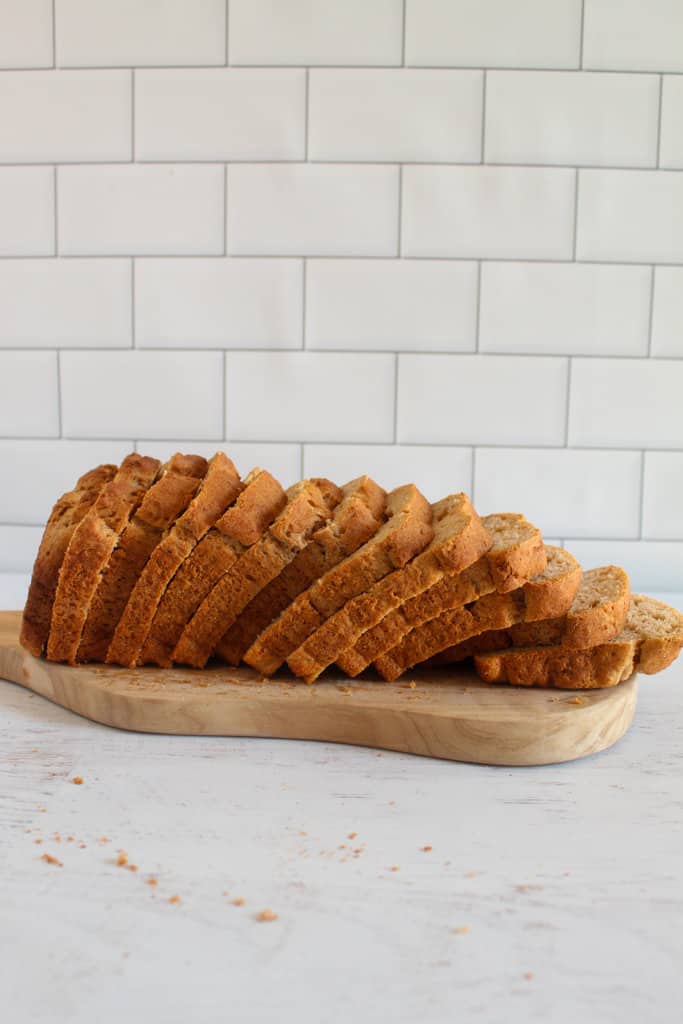
Serving Millet Bread
The good news is that this bread can be served many ways:
- Add some butter and jam to each slice
- Toast each slice and serve it with avocado on top
- Make sandwiches
- Slice thick slices and use them for French toast
- Leave the loaf unsliced and cube it for this French toast casserole
Storage Tips
This millet flour bread will last for 2 days in an airtight container at room temperature. If you need to store it longer than that, slice the entire loaf and place small pieces of wax paper in between each slice. Place the entire sliced loaf back into an airtight container and freeze. Slices can be taken directly from the freezer to the toaster.
Pro Tips
All gluten free breads are not created equal. There are many factors that come into play when it comes to achieving the best taste and soft, chewy texture. With a few simple tips, this homemade millet bread will come out perfect every time.
1. Use room temperature ingredients (except for the warm water)
Make sure your ingredients are at room temperature for this bread recipe. The warm water is the only exception here. It needs to be at approximately 100°F to properly activate the yeast. Using room temperature ingredients allows them to easily combine during mixing.
2. Measure the flours by weight
Using a digital kitchen scale to measure the flours by weight will yield the best results in this recipe. Measuring by cup is not quite as accurate as using weight measurements. This will make certain your bread comes out soft and fluffy! Check out my baking masterclass for more info about this.
3. Let the batter rise only until it reaches the top of the pan
The bread batter needs time for the yeast to produce enough carbon dioxide for the bread to rise. Allow the batter to rise just until the top rises over the top of the pan, about 35 minutes. Letting the batter rise too much can cause it to overflow or collapse in the oven.
4. Helpful tools
Here are a few tools that will make prepping your millet bread super easy:
- Digital scale
- Liquid measuring cup
- Medium bowl
- Stand mixer
- Rubber spatula
- 8”x4.5” loaf pan
- Instant read thermometer
FAQs
Is millet flour gluten free?
What is the best way to store this bread?
What is the best way to serve millet bread?
More Yeast Bread Recipes
Did you make and love this recipe? Give it your review and ![]() rating below! And make sure to follow me on Instagram, Pinterest and Facebook too!
rating below! And make sure to follow me on Instagram, Pinterest and Facebook too!

Millet Bread (Dairy Free)
Ingredients
Method
- In a measuring cup, add yeast to warm water. Stir to combine. Let sit for 5 minutes.
- In a medium bowl, combine the millet flour, tapioca flour, brown rice flour, ground flax seed, xanthan gum and salt. Set aside.
- In the bowl of a stand mixer, add the eggs, olive oil, honey, sugar and yeast mixture. Mix for 30 seconds.
- Add the dry ingredients to the stand mixer and mix for 30 seconds. Scrape batter down. Mix on medium speed for 3 minutes.
- Spray a 8"x4.5" baking pan with cooking spray. Scrape batter into pan.
- Let rise for 35 minutes or until batter crests over the top of the pan.
- Bake 350 F for 35-40 minutes or until an instant read thermometer registers 210F.
- Let cool for 15 minutes. Turn bread out of the pan and let cool completely.
Video
Notes
- Flours and starches are Nuts.com brand, other brands may work, but they haven’t been tested.
- Tapioca starch and tapioca flour are the same thing.
- Half of the millet flour can be substituted with teff flour – weight should equal 120 grams between both.
- The Bob’s Red Mill brand of golden flax seed meal was used in this bread.
- Egg substitute is not recommended in this recipe.
- Test for doneness with an instant read thermometer (210 F)
- Bread will stay fresh for up to 2 days in a sealed, gallon plastic bag. Or slice and freeze for longer storage.
